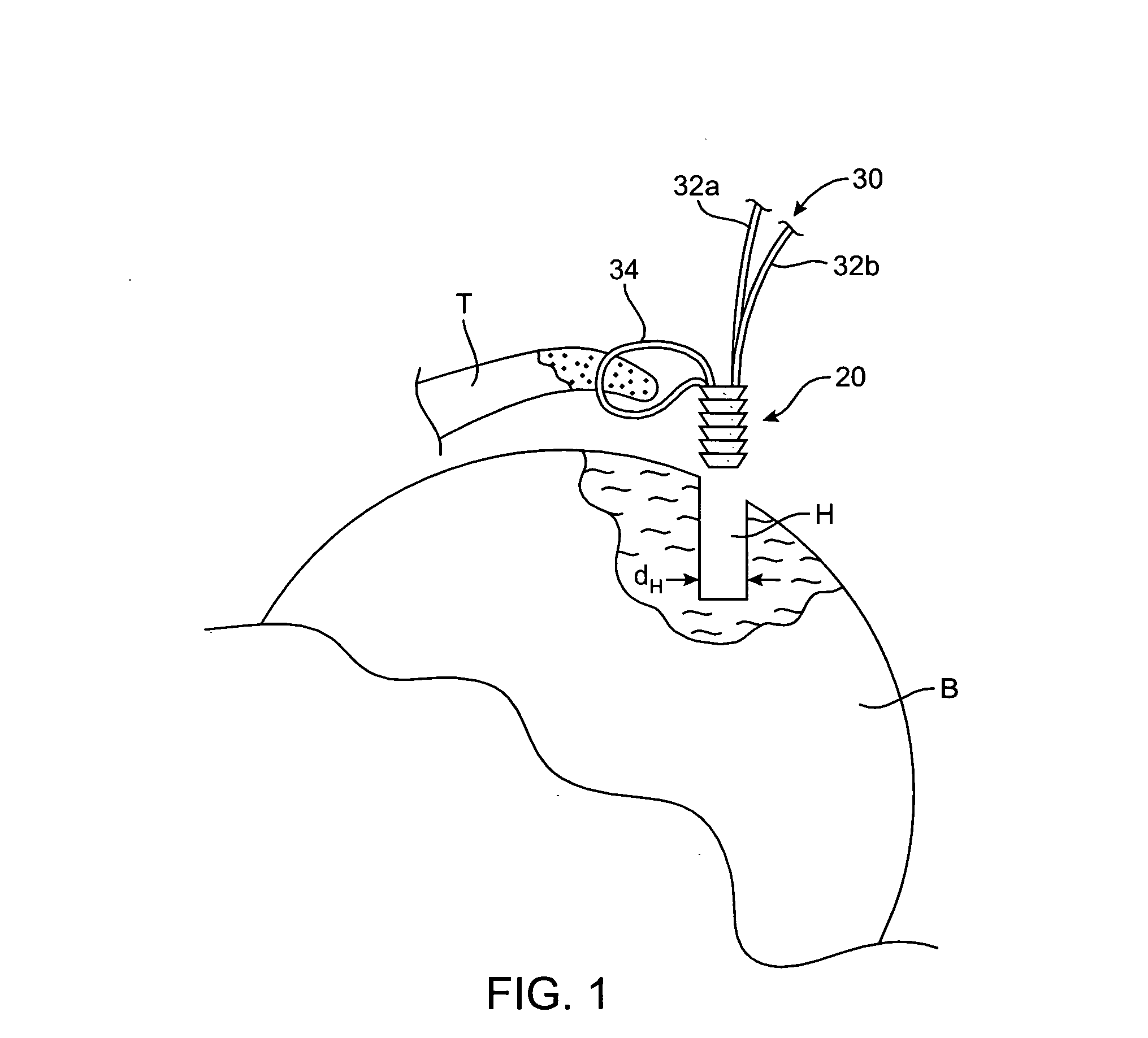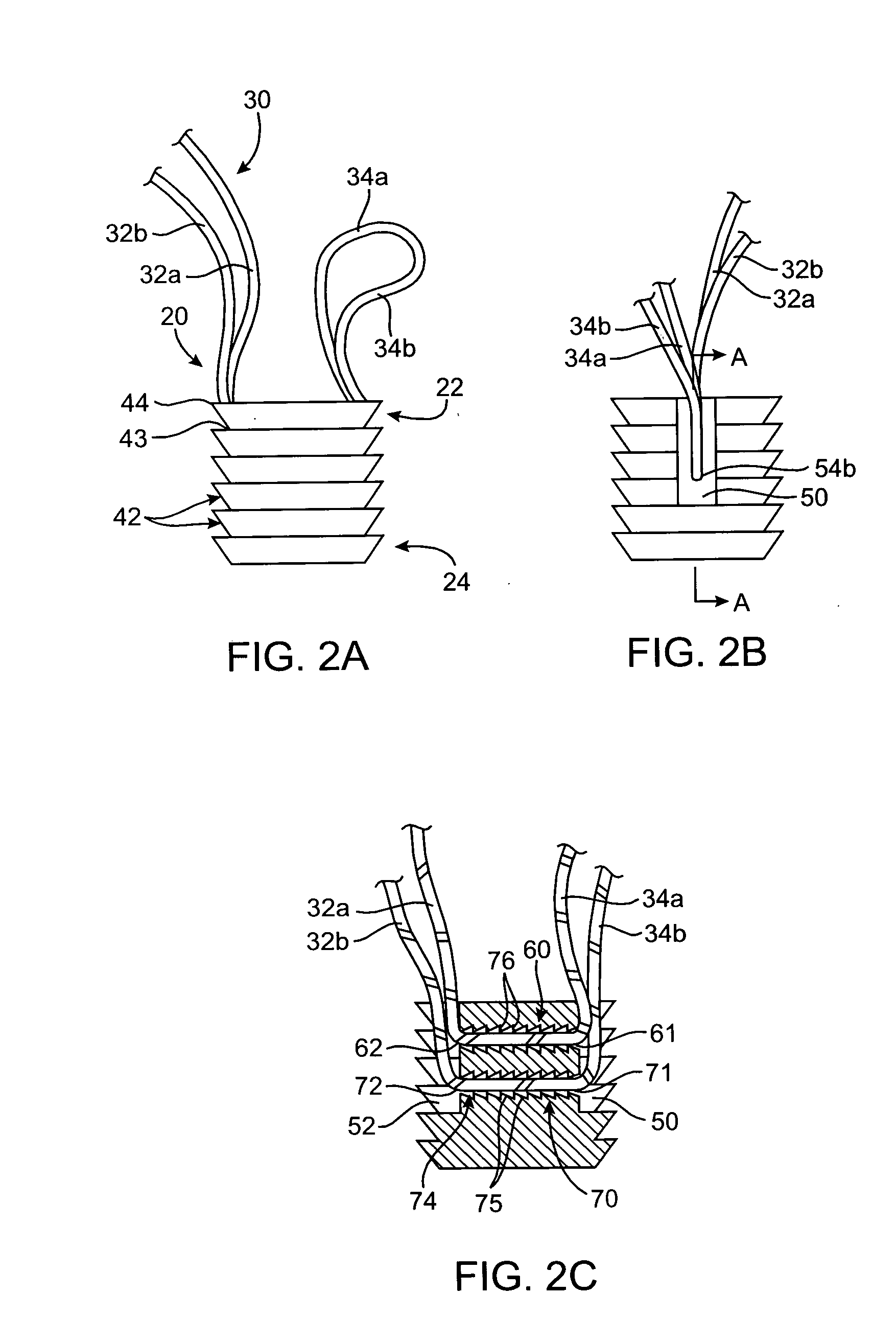Apparatus and methods for securing tissue to bone
a technology of tissue and bone, applied in the field of surgical arthroscopy, can solve the problems of difficulty in securing tissue to bone, etc., and achieves the effect of convenient us
- Summary
- Abstract
- Description
- Claims
- Application Information
AI Technical Summary
Benefits of technology
Problems solved by technology
Method used
Image
Examples
Embodiment Construction
[0058] Referring now to FIG. 1, a schematic of a bone and tissue interface is shown primarily for illustrative purposes. In FIG. 1, tissue T has a torn end and it is desirable to secure the torn end to a section of bone B. In a first step, hole H having diameter dH is drilled in bone B, as depicted, using techniques that are well known in the art.
[0059] Bone anchor member 20, which will be described in greater detail in FIGS. 2A-2C hereinbelow, is shown as a means for securing tissue T to bone B. Bone anchor member 20 is configured to be used in conjunction with a suture length 30. Suture 30 has first and second ends 32a and 32b, which are coupled to bone anchor member 20, as described in FIGS. 2A-2C hereinbelow. It should be noted that a central region of suture 30 forms loop 34, which is threaded through a section of tissue T near the torn end of the tissue, as depicted in FIG. 1, using techniques that are known in the art.
[0060] Referring now to FIGS. 2A-2C, features of bone an...
PUM
 Login to View More
Login to View More Abstract
Description
Claims
Application Information
 Login to View More
Login to View More - R&D
- Intellectual Property
- Life Sciences
- Materials
- Tech Scout
- Unparalleled Data Quality
- Higher Quality Content
- 60% Fewer Hallucinations
Browse by: Latest US Patents, China's latest patents, Technical Efficacy Thesaurus, Application Domain, Technology Topic, Popular Technical Reports.
© 2025 PatSnap. All rights reserved.Legal|Privacy policy|Modern Slavery Act Transparency Statement|Sitemap|About US| Contact US: help@patsnap.com



